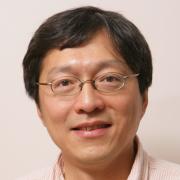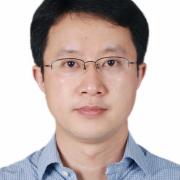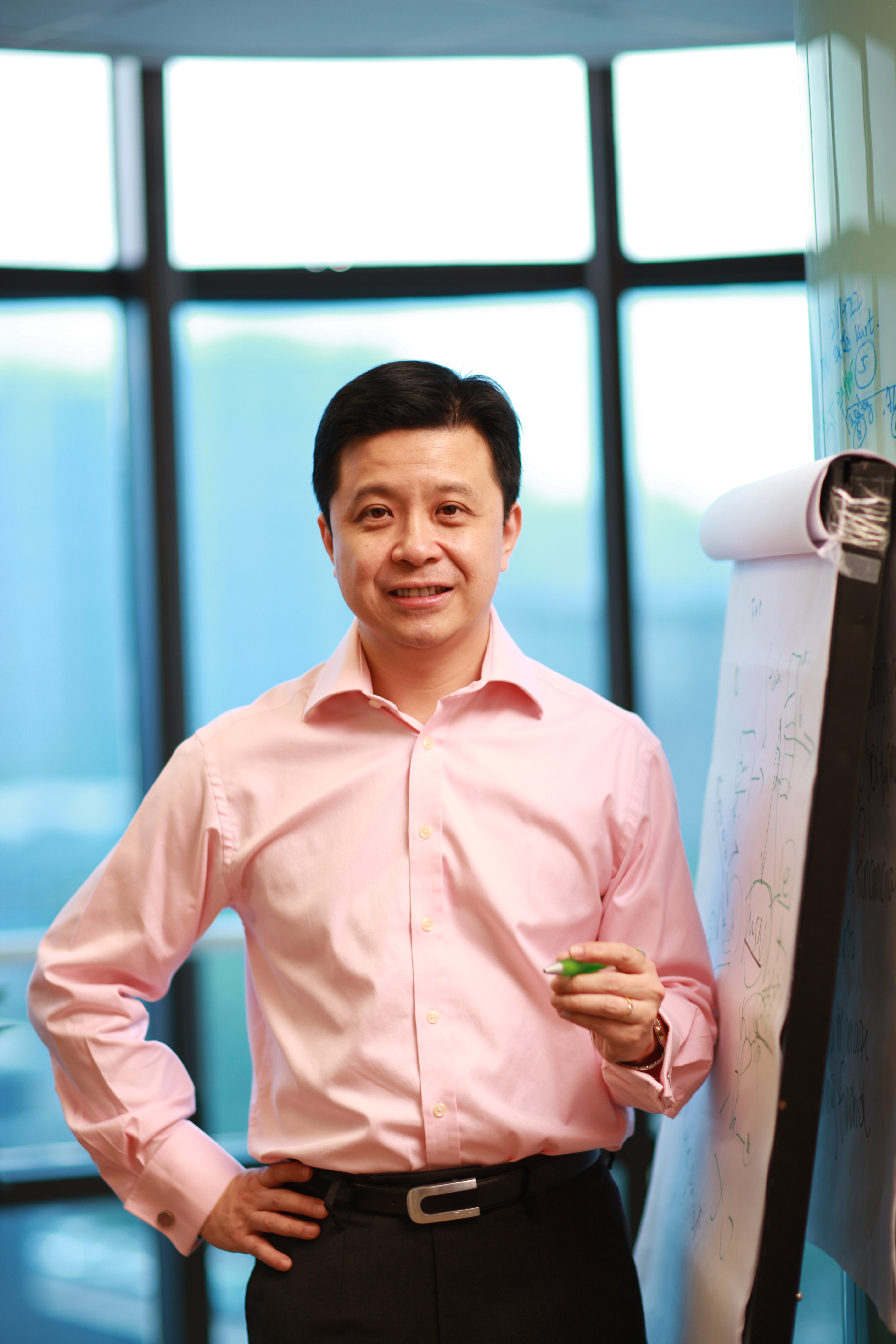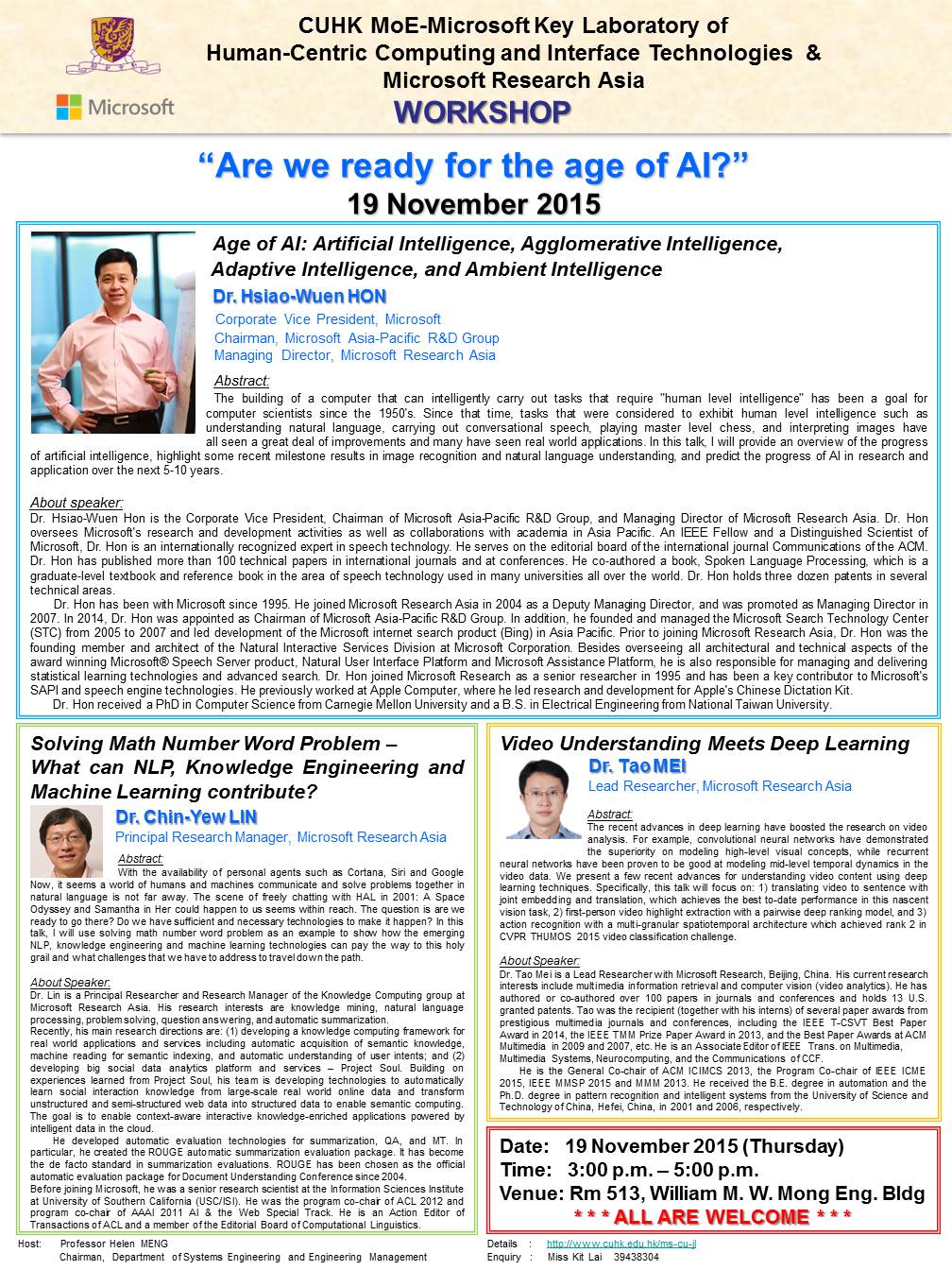Workshop on “Are we ready for the age of AI?”
Title: Age of AI: Artificial Intelligence, Agglomerative Intelligence, Adaptive Intelligence, and Ambient Intelligence
Speaker: Dr. Hsiao-Wuen HON
Corporate Vice President, Microsoft
Chairman, Microsoft Asia-Pacific R&D Group
Managing Director, Microsoft Research Asia
Date: 19 November 2015 (Thursday)
Time: 3:00 p.m. – 5:00 p.m.
Venue: Rm 513, William M. W. Mong Eng. Bldg
Abstract:
The building of a computer that can intelligently carry out tasks that require "human level intelligence" has been a goal for computer scientists since the 1950's. Since that time, tasks that were considered to exhibit human level intelligence such as understanding natural language, carrying out conversational speech, playing master level chess, and interpreting images have all seen a great deal of improvements and many have seen real world applications. In this talk, I will provide an overview of the progress of artificial intelligence, highlight some recent milestone results in image recognition and natural language understanding, and predict the progress of AI in research and application over the next 5-10 years.
Title: Solving Math Number Word Problem – What can NLP, Knowledge Engineering and Machine Learning contribute?
Speaker: Chin-Yew LIN
Principal Research Manager
Microsoft Research Asia
Date: 19 November 2015 (Thursday)
Time: 3:00 p.m. – 5:00 p.m.
Venue: Rm 513, William M. W. Mong Eng. Bldg

Title: Video Understanding Meets Deep Learning
Speaker: Dr. Tao MEI
Lead Researcher
Microsoft Research Asia
Date: 19 November 2015 (Thursday)
Time: 3:00 p.m. – 5:00 p.m.
Venue: Rm 513, William M. W. Mong Eng. Bldg
Abstract:
The recent advances in deep learning have boosted the research on video analysis. For example, convolutional neural networks have demonstrated the superiority on modeling high-level visual concepts, while recurrent neural networks have been proven to be good at modeling mid-level temporal dynamics in the video data. We present a few recent advances for understanding video content using deep learning techniques. Specifically, this talk will focus on: 1) translating video to sentence with joint embedding and translation, which achieves the best to-date performance in this nascent vision task, 2) first-person video highlight extraction with a pairwise deep ranking model, and 3) action recognition with a multi-granular spatiotemporal architecture which achieved rank 2 in CVPR THUMOS 2015 video classification challenge.




